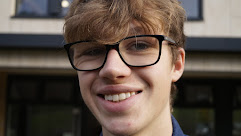The Establishing wide shot (EWS) is typically used to open a scene or even film. They are usually capable of establishing the geography and time of day of a location and are critical in making the viewer aware of the setting.
The Master shot (MS) often follows the EWS and confirms the location and geography of a scene. It also shows the characters in the scene and where they are in relation to eachother.
The Wide shot (WS) is different from the EWS as it is usually concerned with the scale of the subject in comparison to their surroundings. Could also be used to create a sense of isolation or loneliness.
The Full shot (FS) is when the subject's entire body reaches from the top to bottom of the frame. This is used because it is tight enough to show facial expressions but also action.
The Medium full shot (MFS) shows the top of a subjects head down to their waist. This can be used to present a character as confrontational or dangerous which is why it is often referred to as the 'Cowboy shot' (holster height.) The Medium shot (MS) is seen as the most popular shot size in film making and is often described as neutral as it doesn't feel very dramatic. It is used because the subject is at a similair distance to how we would be when interacting with someone in real life. It is typically shot above the waist but below the chest.
The Medium close-up shot (MCU) shows from the characters mid chest to just above their head, this is intimate without losing the subjects physicality. It's good for showing close conversations between characters as it is a bit more intense than the regular MS.
The Close-up (CU) highlights thoughts, feelings and a change in emotion. This is typically shot at eye-level to add intimacy and outlining the 'windows' into a character's psyche. They are also used at times of decision or anxiety.
Finally the Extreme close-up (ECU) isolates a specific area on a subject, this could be the lips, eyes etc. This is very intimate and dramatic as well as showing the viewer smaller details which they could've missed if other shot sizes were used.
The Master shot (MS) often follows the EWS and confirms the location and geography of a scene. It also shows the characters in the scene and where they are in relation to eachother.
The Full shot (FS) is when the subject's entire body reaches from the top to bottom of the frame. This is used because it is tight enough to show facial expressions but also action.
The Medium full shot (MFS) shows the top of a subjects head down to their waist. This can be used to present a character as confrontational or dangerous which is why it is often referred to as the 'Cowboy shot' (holster height.) The Medium shot (MS) is seen as the most popular shot size in film making and is often described as neutral as it doesn't feel very dramatic. It is used because the subject is at a similair distance to how we would be when interacting with someone in real life. It is typically shot above the waist but below the chest.
The Medium close-up shot (MCU) shows from the characters mid chest to just above their head, this is intimate without losing the subjects physicality. It's good for showing close conversations between characters as it is a bit more intense than the regular MS.
The Close-up (CU) highlights thoughts, feelings and a change in emotion. This is typically shot at eye-level to add intimacy and outlining the 'windows' into a character's psyche. They are also used at times of decision or anxiety.
Finally the Extreme close-up (ECU) isolates a specific area on a subject, this could be the lips, eyes etc. This is very intimate and dramatic as well as showing the viewer smaller details which they could've missed if other shot sizes were used.



















Excellent work - I really like that you have used your own examples and Hollywood examples
ReplyDelete